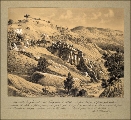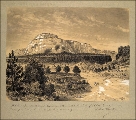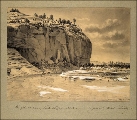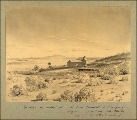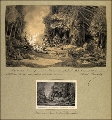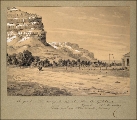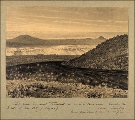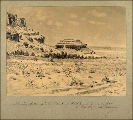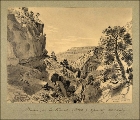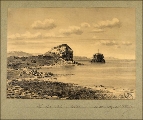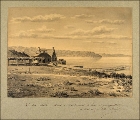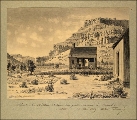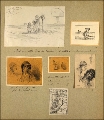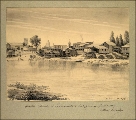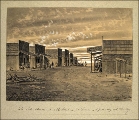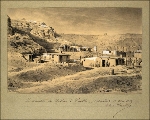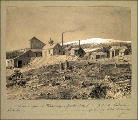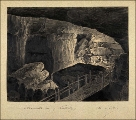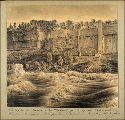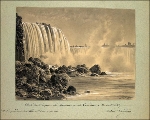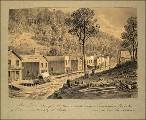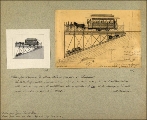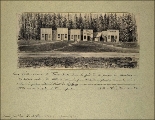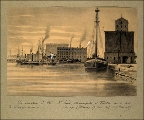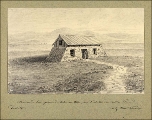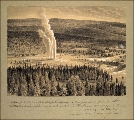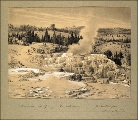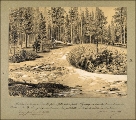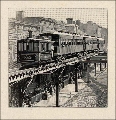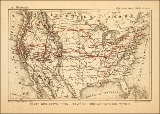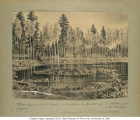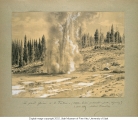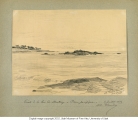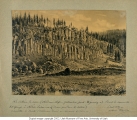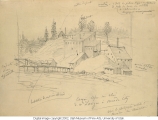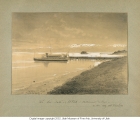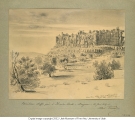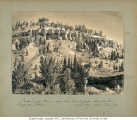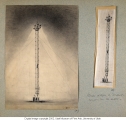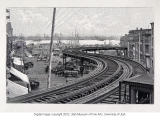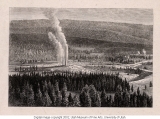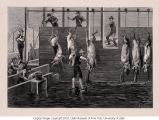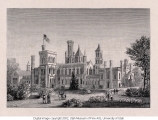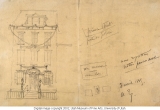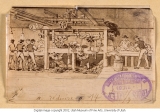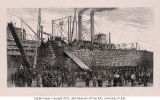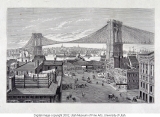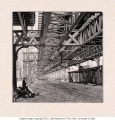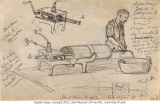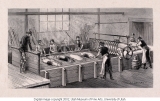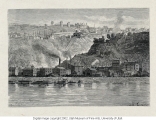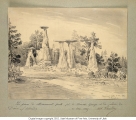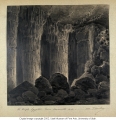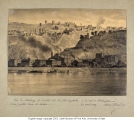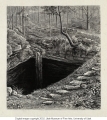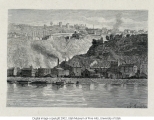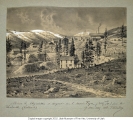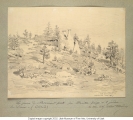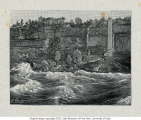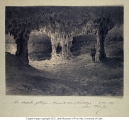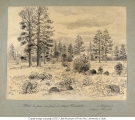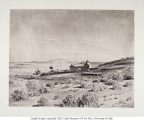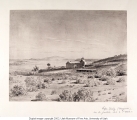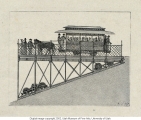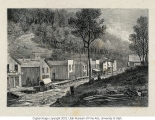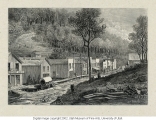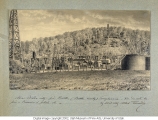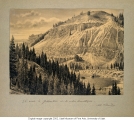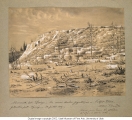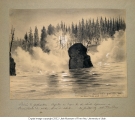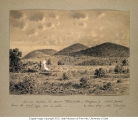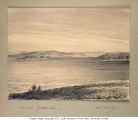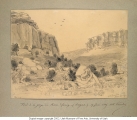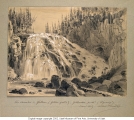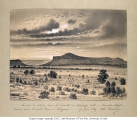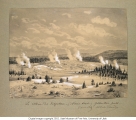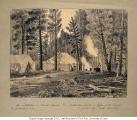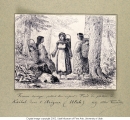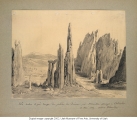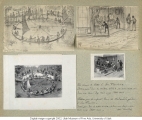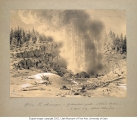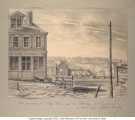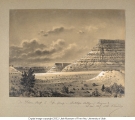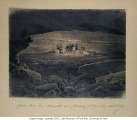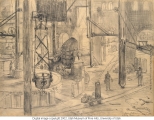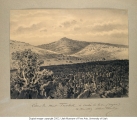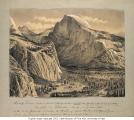| Identifier |
1978_385_statenIslandTrain.jpg |
| Title |
Staten Island Train |
| Creator |
Thiriat, Henri |
| Subject |
Elevated railroads--New York (State)--New York--1880-1890; Cities & towns--New York (State)--New York--1880-1890; Railroad tracks--New York (State)--New York--1880-1890; Railroad cars--New York (State)--New York--1880-1890 |
| Published Location |
This image, engraved by H[enri] T[hiriat], was published in La Nature, no 653 (5 Dec 1885), as figure 2 (p. 8), to accompany the first installment of Albert Tissandier's "Lettres d'Amérique", with the caption "Chemin de fer aérien de New-York. Vue en dessus". http://cnum.cnam.fr/CGI/fpage.cgi?4KY28.26/12/100/432/0/0 The same image appears as figure 3 (p. 9) in Tissandier's book Six mois aux États-Unis : voyage d'un touriste dans l'Amérique du nord suivi d'une excursion à Panama (Paris : G. Masson, [1886]), with the caption "Chemin de fer aérien de New-York (d'après une photographie)". Associated text (p. 5-6): "Les voitures ont 11m,30 de long et 2m,70 de large, l'écartement des centres des boggies est de 9m,10. Elles comportent des plates-formes aux deux extrémités, et elles renferment chacune 48 places, dont 32 en long et 16 en travers dans le milieu de la voiture (fig. 3). Les trains sont composés de quatre wagons au plus, ils sont remorqués par une petite locomotive-tender. Cette machine entraîne avec elle un volume de 1450 litres d'eau, suffisant pour le plus long parcours qu'elle peut avoir à effectuer. Elle a deux essieux accouplés, convenablement rapprochés pour permettre le passage dans les courbes, elle est portée également à l'avant et à l'arrière sur un truck articulé; son poids total est de 5800 kilogrammes, et son poids adhérent de 5700 kilogrammes." Reproduced in the exhibition catalog, Albert Tissandier : Drawings of nature and industry in the United States, 1885, by Mary F. Francey ([Salt Lake City, UT] : Utah Museum of Fine Arts, 2001), p. 15. Used in a Utah Museum of Fine Arts advertising campaign that ran during the months of October and November 2003 in all the TRAX trains of the Utah Transit Authority (some of the advertisements were still up as late as April 2004). |
| Short Essay |
Founded by early Dutch settlers in 1661, Staten Island was named after States General, Holland's governing body. Located five miles from Manhattan and one half mile from Brooklyn, Staten Island became a popular week end retreat for local citizens during the late nineteenth century. A seaside resort with great appeal, it soon attracted national and international tourists as well. To accommodate the large number of visitors, a ferry service brought people to the island where they could board an elevated train for public transportation on the island. Elevated trains built to run on steel beam frames that ran above the city streets had been widely used in New York since 1878. These metro trains consisted of four passenger cars that were pulled by a smaller steam engine locomotive instead of electric motors as Thomas Edison had proposed. In this etching, Albert Tissandier has represented one of the island trains that serviced incoming ferries. The train, which was supported by a steel structure the same height as the upper level windows of the houses along the tracks, dominates the center of the composition. Curiously, there are no human figures visible in the street beneath the tracks, confirming the artist's consuming interest in the mechanics of the elevated train that was unfamiliar to him. Intrigued by the construction of the elevated tracks, and the trains that ran on them, Tissandier wrote: "Elevated trains have offered convenient transportation for the inhabitants of New York City since 1878." A later entry reads: "Traffic on the elevated railways involves no special danger because all bridges are furnished with balustrades and constructed with all precautions necessary to avert possible consequences that could result from derailment from such a height. The trains are composed of four cars at the most, and are pulled by a small tender locomotive. This machine carries 1,450 liters of water along with it, which is sufficient for the longest route it is scheduled to take. It has two coupled axles, conveniently joined to permit the passage of the train along curves, and is carried in both front and back on an articulated truck. Its total weight is 5,800 kilograms with an adherent weight of 5,700 kilograms." Tissandier's skillful rendering of the train is pictorial documentation of his careful observation of mechanical details as well as evidence of his genuine admiration for American technological accomplishments. |
| Publisher |
Utah Museum of Fine Arts |
| Contributors |
Mary F. Francey |
| Date |
1885 |
| Type |
Image |
| Format |
application/pdf |
| Source |
Albert Tissandier: Drawings of Nature and Industry in the United States |
| Language |
fra |
| Rights Management |
Digital image c2001 Utah Museum of Fine Arts, University of Utah |
| Source Physical Dimensions |
9.525 cm High x 9.525 cm Wide |
| Source Characteristics |
Engraving - metal plate |
| Light Source |
Kaiser Softlite ProVision 6x55W flourescent 5400K daylight |
| Archival Resolution |
TIFF: 2019 x 2071 pixels |
| Display Resolution |
JPEG: 900 x 927 pixels |
| Bit Depth |
36-bit color |
| Scanning Device |
Leica S1 Pro scanning camera; Hasselblad CFi 50mm F/4 lens; f/11 |
| Exhibit Catalog |
ISBN: 0-9657215-0-7; Library of Congress Catalog Number: 2001094211 |
| Setname |
uu_umfa_at |
| ID |
415839 |
| Reference URL |
https://collections.lib.utah.edu/ark:/87278/s6bk1cds/415839 |

